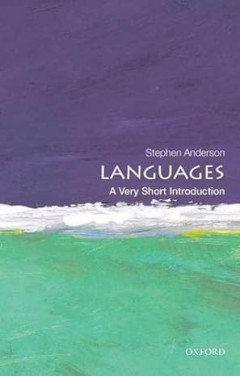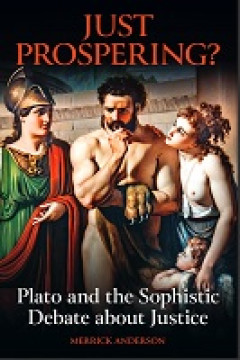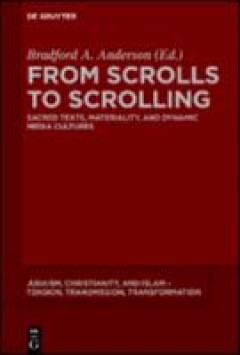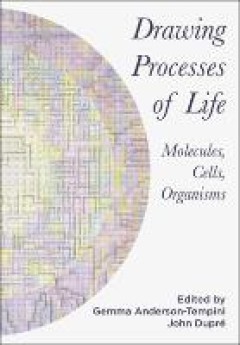Ditapis dengan

E-book Languages: A Very Short Introduction
How many languages are there? What differentiates one language from another? Are new languages still being discovered? Why are so many languages disappearing? The diversity of languages today is varied, but it is steadily declining. In this Very Short Introduction, Stephen Anderson answers the above questions by looking at the science behind languages. Considering a wide range of different l…
- Edisi
- -
- ISBN/ISSN
- 9780199590599
- Deskripsi Fisik
- 313 halaman
- Judul Seri
- -
- No. Panggil
- 400.0 AND l

E-book Just Prospering? Plato and the Sophistic Debate about Justice
This book argues that Plato’s Republic must be understood as developing out of a 5th Century sophistic debate. In Part One the author presents a new analysis of the sophists and their extant texts addressing the important topics of justice and its value. This part shows that already in the 5th Century there was a robust debate about whether the just or unjust life was better for the self-inte…
- Edisi
- -
- ISBN/ISSN
- 9780197267660
- Deskripsi Fisik
- 238 halaman
- Judul Seri
- -
- No. Panggil
- 183 AND j
E-book The Graphic Design : Idea Book
Albers advanced the idea that colour is continually deceptive, and that the exact same colour can evoke innumerable responses depending on how it is seen against other colours. He argued against ‘mechanically applying or merely implying laws and rules of colour harmony’, because of the subjective nature of perception – it is almost impossible to see a colour by itself and not interacting …
- Edisi
- -
- ISBN/ISSN
- 9781780677569
- Deskripsi Fisik
- 129 hlm
- Judul Seri
- -
- No. Panggil
- 741.6 HEL t
E-book Connecting Continents : Archaeology and History in the Indian Ocean World
equently missing from this burgeoning discourse, however, are contributions by archaeologists, and historical archaeologists in par-ticular,6 as well as conscious attempts to study this region’s past from an interdisciplinary perspective. A recent special edition of the journal Slavery and Abolition demonstrates that some historians are increas-ingly aware …
- Edisi
- -
- ISBN/ISSN
- 9780821446409
- Deskripsi Fisik
- 429 hlm
- Judul Seri
- -
- No. Panggil
- 930.1 SEE c
E-book Butterflies : Taking Science to the Backyard
Papilionidae, Pieridae, Lycaenidae, and Nymphalidae. Close to 750 species inhabit the United States and Canada, most notably the Monarch and Regal Fritillary can be found in Nebraska. Approximately 3% of butterfly species are threatened with extinction. This decline in butterfly populations is attributed primarily to habitat loss due to urbanization and agriculture. As populations continue to d…
- Edisi
- -
- ISBN/ISSN
- -
- Deskripsi Fisik
- 78 hlm
- Judul Seri
- -
- No. Panggil
- 595.7 MUL b
E-book Inspiration to Live Your Magic : 75 Inspiring Biographies
The most powerful story we tell is the story we tell to ourselves about our self. In my youth, my story was based on my experience. In gym class, I was always the last one picked for teams. “Who will take Larry?” the gym teacher would ask. Girls told me, “I just want to be friends,” but I wanted to be more than friends. My marks in school were not impressive. I passed, but that was abou…
- Edisi
- -
- ISBN/ISSN
- -
- Deskripsi Fisik
- 167 hlm
- Judul Seri
- -
- No. Panggil
- 920.02 AND i

E-Book From Scrolls to Scrolling: Sacred Texts, Materiality, and Dynamic Medi…
Using the digital turn as a starting point, the essays in this volume explore the materiality of sacred texts in Judaism, Christianity, and Islam, along with transitions between various media cultures and material forms. The essays explore how material factors have shaped the production and transmission of sacred texts, as well as impacting the way in which people engage with, use, and perform …
- Edisi
- -
- ISBN/ISSN
- 9783110629590
- Deskripsi Fisik
- 327 halaman
- Judul Seri
- -
- No. Panggil
- 200.1 AND f

E-Book Drawing Processes of Life: Molecules, Cells, Organisms
How the challenge of depicting biological systems can generate productive questions for artists and scientists. An artist drawing cell division faces a problem: what is the best way to visually represent a dynamic process? This anthology, edited by an artist and a philosopher of science, explores drawing as a way of inquiring into living processes at the molecular, cellular, and organismal scal…
- Edisi
- -
- ISBN/ISSN
- 9781789387094
- Deskripsi Fisik
- 364 halaman
- Judul Seri
- -
- No. Panggil
- 572.8 AND d
E-book Everything Flows : Towards a Processual Philosophy of Biology
his book is a venture in the metaphysics of science, the exploration of the most basicfeatures of the world implied or presupposed by science. One of its main aims is todemonstrate the fundamental importance of such an investigation. Getting this verygeneral picture right makes a real difference to whether we do the science well andunderstand properly what it tells us. The particular metaphysic…
- Edisi
- -
- ISBN/ISSN
- 9780198779636
- Deskripsi Fisik
- 403 hlm
- Judul Seri
- -
- No. Panggil
- 570.1 AND e
E-book Evolutionary Genomics : Statistical and Computational Methods
The typical definition of the genome is often dualistic, referen-cing both structural features and its function to store and transmitbiological information [4]. For example, the US National Institutesof Health (NIH) uses the following definition: “A genome is anorganism’s complete set of DNA, including all of its genes. Eachgenome contains all of the information needed to build and main-tai…
- Edisi
- -
- ISBN/ISSN
- 9781493990740
- Deskripsi Fisik
- 777 hlm
- Judul Seri
- -
- No. Panggil
- 572.8 ALT e
 Karya Umum
Karya Umum  Filsafat
Filsafat  Agama
Agama  Ilmu-ilmu Sosial
Ilmu-ilmu Sosial  Bahasa
Bahasa  Ilmu-ilmu Murni
Ilmu-ilmu Murni  Ilmu-ilmu Terapan
Ilmu-ilmu Terapan  Kesenian, Hiburan, dan Olahraga
Kesenian, Hiburan, dan Olahraga  Kesusastraan
Kesusastraan  Geografi dan Sejarah
Geografi dan Sejarah